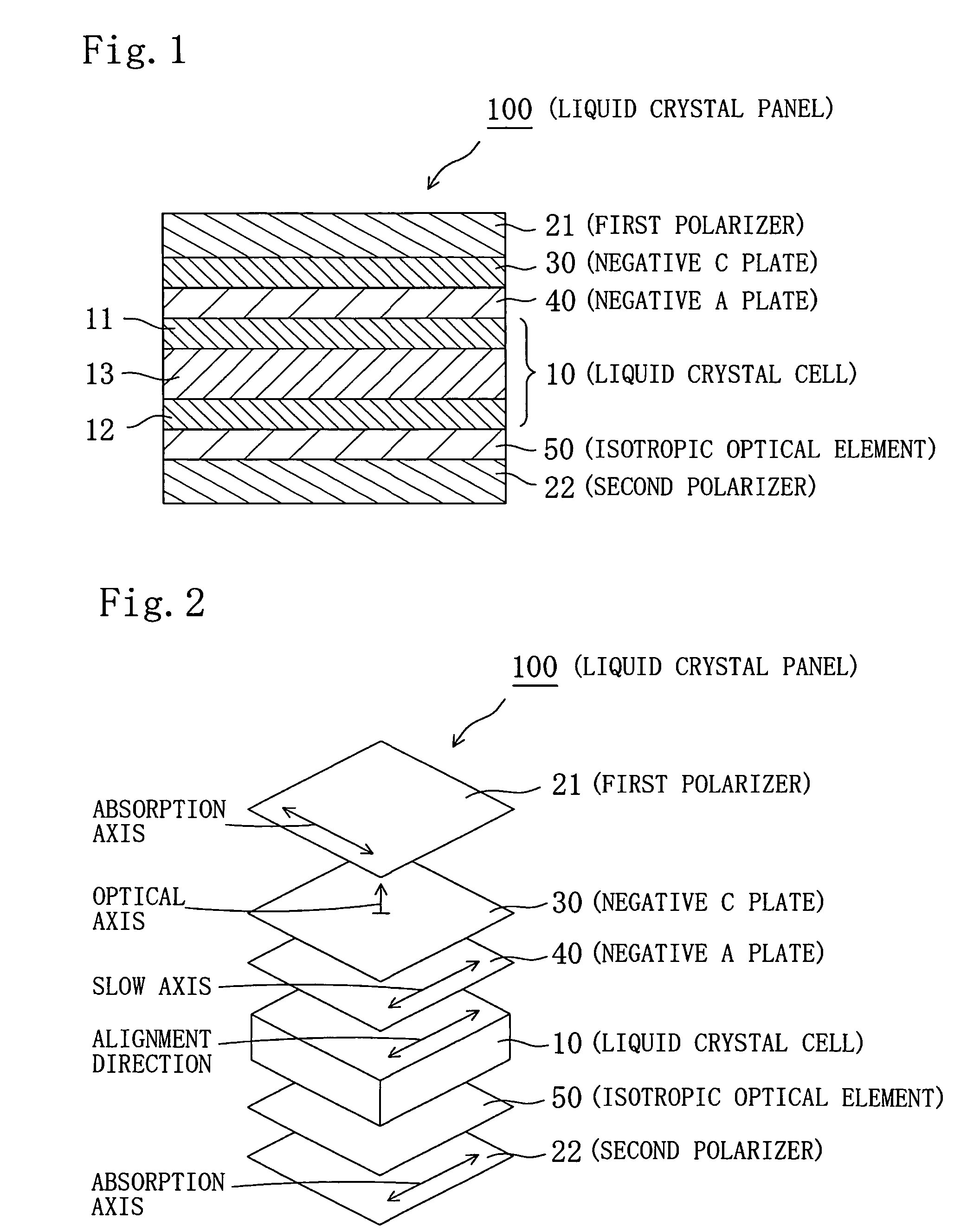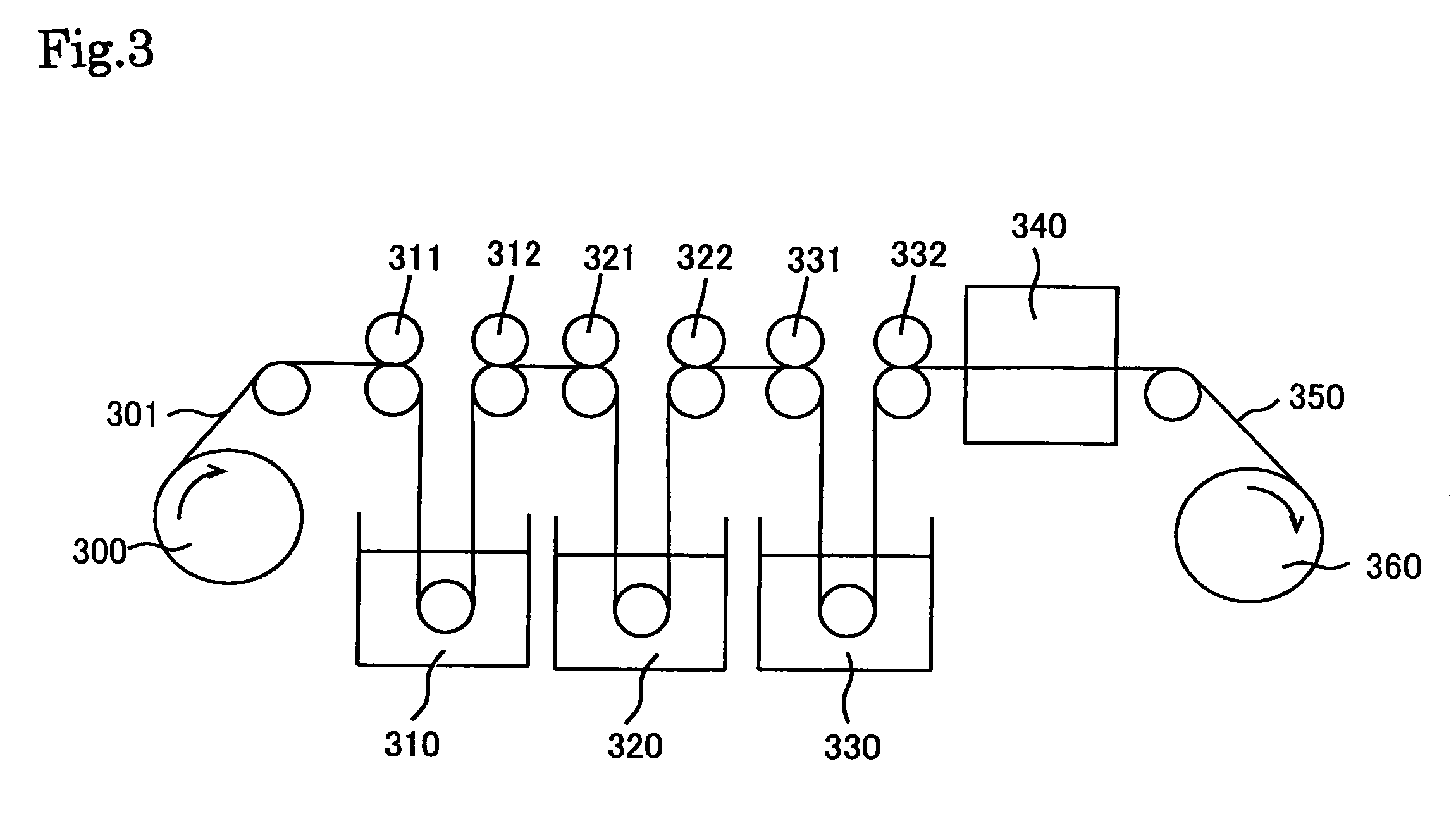Liquid crystal panel, liquid crystal television, and liquid crystal display apparatus
a liquid crystal display and television technology, applied in optics, instruments, optical elements, etc., can solve the problems of insufficient improvement of contrast ratio in oblique direction, inability to operate at high temperatures, and inability to achieve a high contrast ratio, reduce light leakage in oblique direction in black display, and eliminate adverse effects on display properties
- Summary
- Abstract
- Description
- Claims
- Application Information
AI Technical Summary
Benefits of technology
Problems solved by technology
Method used
Image
Examples
reference example 1
[0222]Polyvinyl alcohol [“NH-18”, trade name, available from The Nippon Synthetic Chemical Industry Co., Ltd.] was applied uniformly in one direction to a surface of a polymer film containing as a main component a cycloolefin-based resin [“Zeonor ZF14”, trade name, available from Zeon Corporation (thickness of 40 μm)] by using a rod coater, and the whole was dried in an air-circulating thermostatic oven at 70° C.±1° C. for 5 minutes. Then, the resultant was subjected to rubbing treatment (revolving speed of 1,000 rpm, indentation of 0.30 mm, traveling speed of 60 mm / s) by using a cylindrical roll attached thereto a rubbing cloth with a nylon pile yarn. The obtained polymer film had Re[590] of 0.3 nm and Rth[590] of 2 nm.
[0223]Next, 90 parts by weight of a calamitic liquid crystal compound [“Paliocolor LC242”, trade name, available from BASF Aktiengesellschaft (ne=1.654, no=1.523)], 10 parts by weight of a polymerizable chiral agent [“Paliocolor LC756”, trade name, available from BAS...
reference example 2
[0224]A film of a cycloolefin-based resin obtained through hydrogenation of a ring-opened polymer of a norbornene-based monomer [“Arton F”, trade name, available from JSR Corporation (thickness of 100 μm, glass transition temperature=171° C., average refractive index=1.51, Re[590]=5 nm, Rth[590]=18 nm)] was stretched 1.2 times in a longitudinal direction and 1.2 times in a transverse direction in an air-circulating oven at 190° C.±2° C. by using a biaxial stretching machine. The obtained stretched film was referred to as a retardation film A-2. Table 1 shows the properties of the retardation film A-2.
reference example 3
[0225]A commercially available polymer film containing as a main component triacetylcellulose [“Fujitac”, trade name, available from Fuji Photo Film, Co., Ltd. (thickness of 80 μm, average refractive index=1.48)] was used as it is. This polymer film was referred to as a retardation film A-3. Table 1 shows the properties of the retardation film A-3.
[0226]
TABLE 1ReferenceReferenceReferenceExample 1Example 2Example 3Retardation filmA-1A-2A-3Thickness (μm)418080Transmittance (%)919292Re[590] (nm)0.51.00.5Rth[590] (nm)508060C[590]×10−12(m2 / N)Not5.014.0measured
PUM
| Property | Measurement | Unit |
|---|---|---|
| pretilt angle | aaaaa | aaaaa |
| thickness | aaaaa | aaaaa |
| thickness | aaaaa | aaaaa |
Abstract
Description
Claims
Application Information
 Login to View More
Login to View More - R&D
- Intellectual Property
- Life Sciences
- Materials
- Tech Scout
- Unparalleled Data Quality
- Higher Quality Content
- 60% Fewer Hallucinations
Browse by: Latest US Patents, China's latest patents, Technical Efficacy Thesaurus, Application Domain, Technology Topic, Popular Technical Reports.
© 2025 PatSnap. All rights reserved.Legal|Privacy policy|Modern Slavery Act Transparency Statement|Sitemap|About US| Contact US: help@patsnap.com



